#shiva yantra
Explore tagged Tumblr posts
Text

#shiv ke 12 jyotirling#12 jyotirling shivling#12 jyotirling#lord shiva yantra#shiva yantra#12 jyothirlingas
0 notes
Text
The seeds of Vandana Shiva
15 notes
·
View notes
Text
Navaratri Messages from the Navadurga (नवदुर्गा) 🪷

Navratri Day 5: Messages from Maa Skandamata (स्कन्दमाता) 🪷

Maa Skandamata tells us that our soul’s missions will be both sensuous and intellectually fulfilling. She comes to us as Sri Samudri-Pada who is the ocean of all possibilities and helps us decapitate the intellect to go beyond it. We must learn the skill of integration, integrating the spiritual and material/intellectual as part of the path forward.
Our Lady of the Star Blossom: “Our Lady sees your struggles and knows how to help.”
Cervix - I know what is best for me
Luteal Phase - I clearly see the path in front of me
Bleeding Rituals - I am worthy of sacred celebration
Nephthys- Mistress of the Gateways
I am the Mistress of the Gateways and I awaken your soul's mission.
ॐ देवी स्कन्दमातायै नम:
Oṃ Devī Skandamātāyai Namaḥ
If you’d like a personal message from the Navadurga:

#goddess worship#vedic astrology#shaktism#saraswati#sri yantra#goddess lalitha tripur sundari#kali#navdurga#navadurga#navratri#hinduism#happynavratri#navratri 2024#durga puja#goddess durga#durgamaa#devi durga#durga#shiva#parvati#shakti#hindu mythology
2 notes
·
View notes
Text

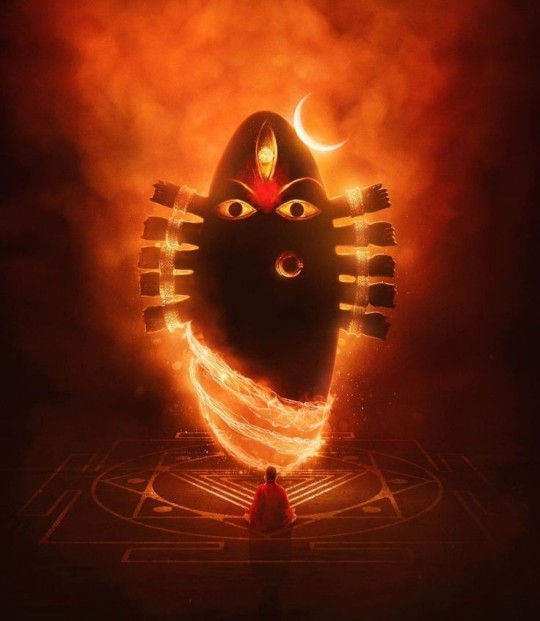
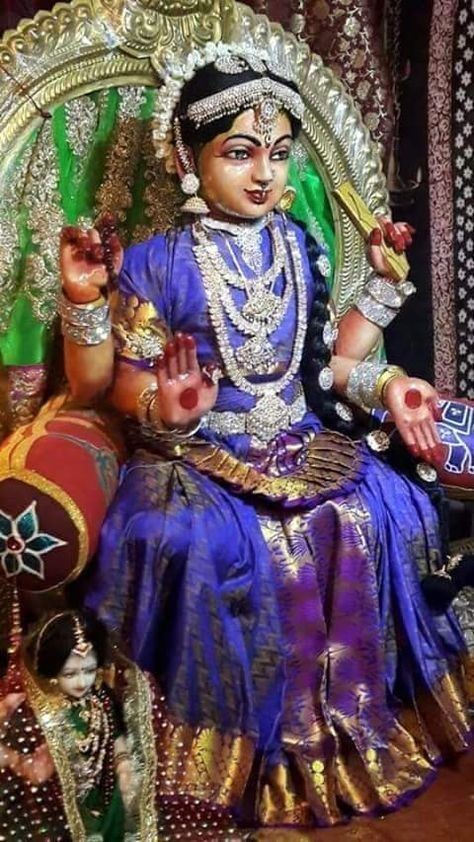
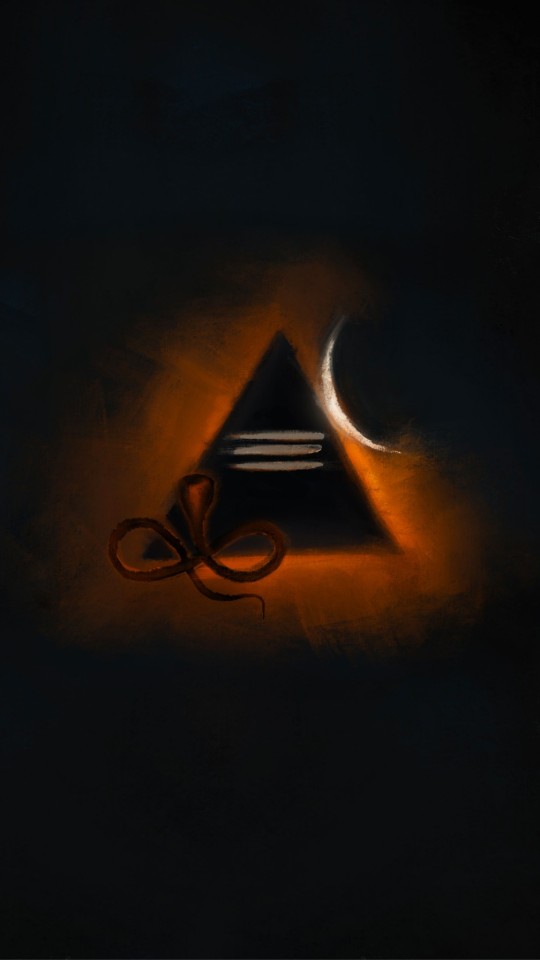


#champaka#hibiscus#lingabhairavi#hinduism#goddess#spiritual#shakti#devi#lord shiva#shivan#shivam#shiva#bala#yantra#adiyogi#meditation
2 notes
·
View notes
Text
no one: ...
me: I will code/program up the PERFECT Sri Yantra with perfect concurrency, concentricity, and equilaterality in R using base and ggplot2 packages.
*has been coding this during their "free time" for the past several weeks*
*has somehow programmed several versions of random geometric proofs into functions*
*realizing they are on a journey*
*I am so close... I can feel it, but maybe that's what the whole cosmic joke is all about lmao*
--
For those who don't know, the geometry of the Sri Yantra is a complex geometrical problem. It's also extremely holy for reasons I cannot explain in this blog post.
It's an open problem even though people have drawn it *almost* perfectly by hand (and by this software called GeoGebra (which I'm not using)). There are also different versions of this yantra.
If I can do this (and I coded my program to spit out the precision measures) with a high degree of precision, I am going to take it as a literal sign from the universe.
(I need to upload this to github, sigh)
#sri yantra#geometry#R programming#coding#healing#yantra#buddhism#hinduism#sri#shiva#shakti#kali ma#jai ma#everything#cosmic#sacred geometry#symbols#a lot of triangles#I do have some “imperfect” ones coded up haha
1 note
·
View note
Text
0 notes
Text
Natural Three Panchmukhi Rudraksha Tulsi Kanthi Mala
Tulsi mala is composed of beads that are made from the wood of Tulsi plant. This mala is worn by worshippers and devotees of Hindu culture. Krishna and Vishnu worshippers also wear black Tulsi mala used for chanting mantras and meditation. Worshippers also wear Tulsi mala to purify their minds and soul. The mala usually contains 108 beads +1 bead. The 108 beads in the mala symbolize chanting the 108 names of Gods.
Tulsi Mala With Rudraksha
The Tulsi Mala is believed to have spiritual and medicinal properties, and wearing it is said to bring peace, protection, and positive energy. You can wear Rudraksha and Tulsi mala together. Rudraksha works on the Chakras in a specific manner to promote healing and positivity. While people take some alcohol and eat non-veg then they avoid this Mala.

0 notes
Text

Kali Yantra
The Yantra is a geometric symbol existing in the external world as well as a subject to be internalized within human consciousness. Kali is the Hindu Goddess of time, of change. She is the power of action, of the breath and of transformation (kriya-shakti). Kali’s essence is Divine Love. Through time, breath and Divine Love all things are accomplished. If we surrender to Her essence, She creates the energy and all is possible. The Kali Yantra, then, contains within it the transformative energy of change.
When we internalize this energy and surrender to its sweet transformative power of love, we begin our inward journey toward healing and spiritual growth. According to the Tantric tradition, the 36 corners of the Yantra represent the 36 principles (tattvas) of creation, from the Most Transcendent to the most minute expression of Materiality. The bindu is the central point, the seat of the soul, the Atman; the internal link with Brahman the Absolute. The bindu is also Kali, and all the phenomenal world emanates out from Her. In the Tantric tradition, Kali as the energy (Shakti) aspect of material nature is united with the Absolute (Shiva) for the sake of creation
Five (5) inverted concentric triangles, 2 circles and 8 lotus petals enclose the bindu.
The 5 inverted concentric triangles represent the 5 kosas or sheaths of the human condition, with soul (bindu) in the middle: Annamayakosa (physical), Pranamayakosa (life force), Manomayakosa (mental/emotional), Vijnanamayakosa (wisdom) and Anandamayakosa (bliss). The 15 corners of the 5 inverted concentric triangles represent the 15 principles of experience (tattvas); the 5 organs of sense – smell, taste, sight, touch, hearing; 5 organs of action – procreation, excretion, locomotion, handling, speaking; and 5 tanmatras – odour, flavour, colour, feeling, sound. The inverted position of the triangle represents the female regenerative power.
The 2 circles symbolize the cycle of birth and death, which we must pierce through the bindu in the centre in order to reach the Absolute Reality.
The 8 lotus petals are symbols of Prakriti, the cause of the manifesting universe. The 8 lotus petals refer to the 8 principles (tattvas) of Prakriti – The 5 principles of materiality or nature (Prakriti) are Earth, Water, Fire, Air, and Ether. And with the 3 principles of the inner instrument (antahkarana), the Lower Mind (manas), the Higher Mind (buddhi) and the Ego-sense (ahamkara), these 8 tattvas compose the phenomenal or relative world.
Kali as the power of action is inherent in the element air or wind, Vayu. In human body Kali exists as Prana, the breath or life-force. Kali holds the five vital airs: prana (upward air); apana (downward air); vyana (air within the body); udana (air leaving the body); and samana (air at the navel which helps to digest food). Kali emphasizes inner action, which generates the internalizing force of so’ ham, the rhythm of the breath, the sound of the breath: I am that, I am Spirit, I am Kali. Like the wind, she is mobile, subtle and transformative. Kali relates to lightning (vidyut-shakti), the electrical force that pervades the universe as the power of transformation. Like the electrical storm, She acts quickly. Kali grants a lightning-like illumination and transformation. She is located in the spiritual heart, the anahata chakra. She is the pulsating of the physical heart, the blood that gives us life; in this action She is called Rakta-Kali or the Red Kali.
Red in the Kali Yantra is the colour of the heart’s lifeblood, filling us with vitality. Black is the colour of the night; but as we approach Kali, She becomes as bright as the sun. Grey is the emerging light into the black, the midworld existing between the earthly plane and the realm of heaven. Kali as Prakriti or Shakti exists in all three realms. Bronze is the colour of the earth, the sphere of normal consciousness. Gold is the colour of the alchemist, the colour of transformation moving us into Higher Consciousness. The red and yellow flames are the transformative fires gently cooking us, making us more palatable for Spirit.
Kali Mantra
Om Hrim Shreem Klim Adya Kalika Param Eshwari Swaha [Om Hreem Shreem Kleem Ahd-yah Kah-lee-kah Pah-rahm Ehsh-wah-ree Swah-hah]
“Om and salutations to She who is the first one, dark within her own reality, the supreme primordial feminine, who cuts through illusion to the unabridged truth of existence.”
The Kali Yantra Meditation:
56 notes
·
View notes
Text


Natraj- Shiva the Great Dancer ૐ Shiva is Omnipresent, he’s everywhere. &
Kali Yantra art by Samadhi Art Kali Moola Mantra ॐ क्रीं क्रीं क्रीं हूँ हूँ ह्रीं ह्रीं दक्षिणे कालिके
क्रीं क्रीं क्रीं हूँ हूँ ह्रीं ह्रीं स्वाहा॥
Om Kreem Kreem Kreem Hum Hum Hreem Hreem Dakshine Kalike
Kreem Kreem Kreem Hum Hum Hreem Hreem Svaha॥
9 notes
·
View notes
Text
|| Tantra: An Unexplored Science, Basic Meaning Explained. How Is It Connected To Bhagawan Shiva? ||
In Hinduism, there are three ways to worship any Deity-
1. The satavik way- In which we show our devotion to a deity using satvik ways like ringing the bell, offering jal, prasad etc.
2. The rajasik way- In which we show our devotion by dressing up in a specific way, using fragrance, using ratnas, some yantra etc.
3. The tamasik way- In which we show our devotion by using some specific rituals, dead bodies, animal sacrifices, sex etc.
It is common for people to misunderstand tantra, but it shouldn't come as a surprise because everyone possesses different qualities within them, namely Sato (purity), Rajo (activity), and Tamo (darkness).
Tantra provides a pathway to worship the divine through the Tamo aspect of our nature. In essence, Tantra is a science of the mind, a form of psychological exploration that aims to expand one's perception. The term 'Tantra' originates from Sanskrit and has multiple interpretations. One explanation is that it is a play on the word 'sutra,' which means 'thread' or 'formula.' If sutras represent individual threads of thought, Tantra can be likened to a loom that weaves these threads together into a comprehensive system of thoughts.
Another understanding is that Tantra combines the words 'tattva,' meaning the science of cosmic principles, and 'mantra,' referring to the science of mystical sound and vibration. In this sense, Tantra delves into the knowledge of universal principles and the use of sacred sounds for spiritual purposes.
According to Hindu beliefs, at the beginning of Satyuga, Bhagawan Shiva appeared as Swacchandanatha, possessing five mouths representing his five energies: Consciousness Bliss Will Knowledge, and Action. Through these energies, Shiva revealed the Tantras, some spoken through each of his mouths and others simultaneously recited through multiple mouths. These Tantras fall into two main categories: Dualistic and Mono-Dualistic, known respectively as "Shiva Tantra" and "Rudra Tantra."
When these five energies of Bhagawan Shiva unite in a way that each holds the others simultaneously, they give rise to 64 Bhairav Tantras, which are purely Monistic (Advaitic) in nature. The philosophical teachings expounded in these Tantras are referred to as the "Trika" philosophy or Kashmir Shaivism.
The origins of the sacred Tantras are believed to involve teachings initially given by Bhagawan Shiva to his wife, which were then passed on to human sages like Matsendranath. It is crucial to understand that Tantra does not advocate promiscuity but rather emphasizes extreme discipline. It is viewed as a technology or method to harness the energies within the body and from the surroundings.
According to Tantra, every human being with limited mental vision is spiritually ill. The true state of health is attained by transcending the constraints of time, space, and causation. The ultimate goal of Tantra is to replace the limited personality with an unlimited and permanent one, facilitating spiritual liberation and profound transformation. Indeed, the practice of Tantra is deeply rooted in the tradition of receiving Guru Diksha or initiation from a qualified spiritual teacher.
As Bhagawan Shiva emphasized in the Kularnava Tantram, all the practices advocated by Tantras, such as Yoga, Dhyana (meditation), Puja (worship), Japa (chanting), and others, are considered futile without proper initiation (adikshata). Just as seeds sown on stones fail to grow into plants, similarly, the efforts of an uninitiated person in these practices may not bear fruit. It's crucial to understand that Tantra is a profound and intricate spiritual path that goes beyond the understanding of today's science. It is not synonymous with black magic or superficial spells (tona totka). Instead, it involves a deep exploration of the mind, energy, and spiritual consciousness.
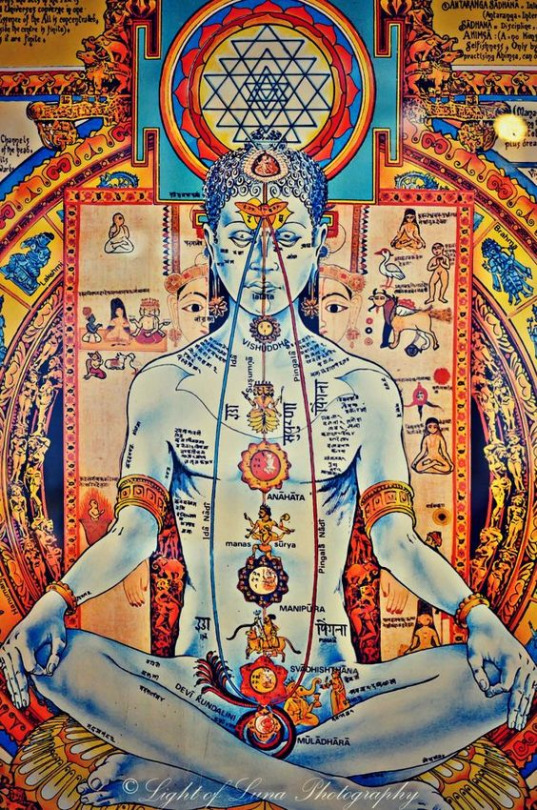
34 notes
·
View notes
Text
Shiv Raksha Kavach Yantra

Explore the Divine Essence of Shiv ji Ke 12 Jyotirling. The twelve Jyotirlingas, or 'lingas of light,' are revered sanctuaries devoted to Lord Shiva that represent his tremendous presence and divine kindness. Each Jyotirlinga represents Lord Shiva in a distinct shape, and pilgrimages to these hallowed spots are said to confer enormous blessings and spiritual upliftment on followers.
These twelve Jyotirlingas are located throughout India, from the icy peaks of Kedarnath in the north to the tranquil coasts of Rameswaram in the south. They are: Somnath, Gujarat Mallikarjuna, Andhra Pradesh
Mahakaleshwar, Madhya Pradesh Omkareshwar, Madhya Pradesh Kedarnath in Uttarakhand. Bhimashankar, Maharashtra Kashi Vishwanath, Uttar Pradesh. Trimbakeshwar, Maharashtra Vaidyanath in Jharkhand. Nageshwar in Gujarat. Rameshwar, Tamil Nadu Grishneshwar, Maharashtra
Each Jyotirlinga has its own meaning and history, which are inextricably linked to Hindu mythology and spirituality as a whole. Pilgrims travel hundreds of kilometers to pay their respects to these ancient sites, seeking consolation, spiritual direction, and blessings from Lord Shiva. Many devotees opt to decorate their homes with objects associated with the twelve Jyotirlingas in order to strengthen their spiritual practice and connection with Lord Shiva. Shivlingas depicting each Jyotirlinga, Lord Shiva Yantras, and Jyotirlinga wall hangings are popular choices, as they are thought to emit divine energy and safeguard the home.
The Shiv Raksha Kavach Yantra is another potent representation of Lord Shiva's protection and blessings. It is worn as an amulet or pendant, thought to protect the person from harmful energy and provide serenity and prosperity. Finally, Lord Shiva's twelve Jyotirlingas are more than simply physical constructions; they represent divine energy and spiritual importance. They inspire millions of devotees around the world to embark on a journey of faith, devotion, and self-discovery while reminding us of Lord Shiva's eternal presence and grace in our lives.
#shiv ke 12 jyotirling#12 jyotirling shivling#12 jyotirling#lord shiva yantra#shiva yantra#12 jyothirlingas#12 jyotirling ke naam#12 jyotirling name#12 jyotirling of mahadev#12 jyotirling of lord shiva#12 jyotirling of shiv ji#shiv jyotirling#jyotirlinga names#12 jyotirling wall hanging#shiv kavach yantra#shiv raksha kavach yantra#12 ज्योतिर्लिंग#महादेव के 12 ज्योतिर्लिंग#dwadash jyotirlingas
0 notes
Text
Navaratri Messages from the Navadurga (नवदुर्गा) 🪷

Navratri Day 8: Messages from Maa Mahagauri (महागौर्यै) 🪷

Maa Mahagauri shows us that our devotion is a process of discovery, learning more about ourselves and about source. She comes to us Sri Vishyaharam, the destroyer of attachments. We are at a threshold now, and we must move past what we once knew to be True and see her Grace in all things.
Freya - Lady of Light: I am the glow of amber and the warmth of sunlight
ॐ देवी महागौर्यै नमः॥
Om Devi Mahagauryai Namah॥
If you’d like a personal message from the Navadurga:

#goddess worship#shaktism#vedic astrology#sri yantra#saraswati#goddess lalitha tripur sundari#kali#durga puja#goddess durga#durgamaa#devi durga#durga#parvati#shiva#shakti#hindu mythology#navadurga#navdurga#navratri#desiblr#desi tumblr#navratri 2024#happynavratri
1 note
·
View note
Text

Dans le tantrisme shivaïte, vira signifie héros et est le nom donné aux initiés qui, par la pratique du yoga, ont acquis la force de dominer à la fois le monde physique et le monde subtil du spirituel.
Le trident (trisulabija mandalam), symbole et yantra de Parama Shiva, est un symbole du tantrisme dans la branche du Shaivisme du Cachemire. Lorsqu'on se concentre sur le trident, on dit que les 3 pointes ont diverses significations. Cependant, l'accent doit être mis sur un ensemble spécifique : création, préservation et destruction.
La rune Algiz ou rune de la vie peut être lue de manière similaire, les 3 pointes représentant les 3 aspects de la vie : naissance, croissance et renaissance. Puisque l'aspect de la mort est représenté par la rune Yr ou rune de la mort, on peut placer la renaissance avec la rune Algiz.
On voit immédiatement le "oui" de la philosophie de l'acceptation de la vie de Nietzsche. Mais, dans Kundalini Tantra de Swami Satyananda Saraswati, ce point est expliqué, le "oui" nietzschéen qui est inhérent aux Aryens :
"Vishnu tenta de résoudre le conflit. Il suggéra qu'ils remuent l'océan primordial (représentant le monde et l'esprit) et dit qu'ils pourraient en diviser le contenu également entre eux.
L'océan fut remué et de nombreuses choses apparurent à la surface pour être partagées et distribuées entre les devas et les rakshasas. En tout, quatorze choses émergèrent, incluant le nectar d'immortalité aux côtés du pire des poisons. Bien sûr, à la fois les devas et les rakshasas voulaient le nectar, mais personne ne voulait avoir affaire au poison. Finalement, seuls les devas obtinrent le nectar, car s'il avait été donné aux rakshasas vicieux, ils seraient devenus immortels. Le poison ne pouvait même pas être rejeté, car partout où il était jeté, il causait du mal. Un grand dilemme surgit et, finalement, Vishnu apporta le poison à Shiva pour lui demander conseil. Shiva avala le poison d'un seul coup. Depuis ce temps, l'un des noms du Seigneur Shiva est Nilakantha, celui à la gorge bleue, et il est souvent représenté ainsi."
Shiva, celui qui dit "oui", qui manie un trident, une autre forme de la rune Algiz, a dit oui à toute la vie. Il a embrassé la vie, le poison et le nectar, et montre ainsi le chemin vers le Surhomme.
Tout comme Saturne a été transformé en Satan par les juifs, les chrétiens ont attaqué les symboles emblématiques de la véritable religion hyperboréenne. Le trident a été transformé en la fourche à trois dents du diable, Lucifer a également été dénigré par les chrétiens spirituellement juifs.
Ceux qui reviennent à notre religion hyperboréenne sont des Vira, ce qui peut être encore décomposé en racine vir, qui signifie "surpasser", ce qui veut dire que ceux qui surmontent les mensonges des judéo-chrétiens et se redécouvrent dans la Minne sont des Héroïques-Aryens.
Utumno
4 notes
·
View notes
Text
How different sects react to the image of Kali on Shiva:
Conservative Brahmin pundit: See? She is ASHAMED. Shiva is, in fact, being a good husband in that he's CONTROLLING her. RITUAL ORDER has been established! *Samadhis from moral superiority*
Shaiva: Shambhu really is awesome. Here, he is calmly observing his messenger doing his bidding as his energy of Destruction.
Sadhu: *15-second bong rip* I feel that.
Western yoga teacher: Here, don't bogart that bong. I do remember writing about this imagery in detail in my latest book. Have you read it yet? It's included in the price of this crystal workshop I'm hosting later this month.
Vaishnava: *Shudder of indignation* Urgh. Disgusting! At least when Krishna went to war, it was JUST, and not so frightfully gory. Besides, he looked a lot prettier. Thus spake verse 8636, stanza 9 of the--
Buddhist: *Smugly blissful smile* It's all bullshit, just like everything in this illusion that we think of as Existence. But at least this image is a good depiction of the level of crazy that we, deludedly, think goes on in this bullshit.
Brahmo: Bullshit is about right. We can reach enlightenment without this primitive nonsense, thankyouverymuch.
Hindu biologist: Excuse YOU, but as the ancient science of Ayurveda will tell you, the excrement of a bovine is sacred and contains chemicals that actively fight diabetes and cancer. In fact, I wrote a paper on this very subject in--
Jyotish astrologer: Anyway, back to the secret messages encoded in the subtle yantras hidden within this image, which I can unlock for you, if you just call my WhatsApp number. Give me your birth star and rs. 50 000.- I will do a puja that will put you in Shiva's consciousness immediately!
Bhakta: WHEEEEEEEEE
Shakta: Yes, yes, yes! Isn't she wonderful? Shiva here has the best, VIP seat from which to enjoy the dance of the Universe herself!
Tantric: Heh. No knickers.
13 notes
·
View notes
Text
0 notes
Text
The Meaning of the Symbols: An Exploration of Occult and Cultural Icons
I was studying today, but couldn’t really focus. I keep thinking about the symbols i saw and what their meanings are.
So I have researched it, and this is what i have found.
Inverted Pentagram:
More than just a star, the inverted pentagram, characterized by two points projecting upwards, is often interpreted as a symbol of evil and darkness. This configuration is believed to overturn the proper order of things, symbolizing the triumph of the material over the spiritual.
It also represents the goat of lust, its horns attacking the heavens, mirrored by the two upward points. Encircled, the pentagram becomes a pentacle, which holds central importance in the evocation of spirits within various esoteric traditions. Typically, a ritual involving a pentacle includes a series of conjurations, each increasing in potency.

Celtic Knots:
The Pentagram was made out of Celtic knots, They represent Infinity, eternity and interconnectedness.
Celtic knots are distinguished by their endless, interwoven lines that have no clear start or finish. This continuous loop design symbolizes eternity, eternal life, the nature of the soul or love's enduring bond. The designs vary from simple loops to complex interlacings.

Ouroboros:
The ouroboros is an ancient symbol depicting a serpent or dragon eating its own tail. Originating from ancient Egyptian iconography and later adopted into Greek alchemical symbolism, it represents a range of themes such as cyclicality, self-reflection, renewal, and the eternal nature of the universe.
Ouroboros comes from the Greek words "oura" (tail) and "boros" (eating), meaning "he who eats the tail."
The ouroboros, with its rich and diverse historical lineage and deep symbolic significance, continues to be a powerful and enduring symbol representing the perpetual cycles of life and the universe's inherent complexity and unity.
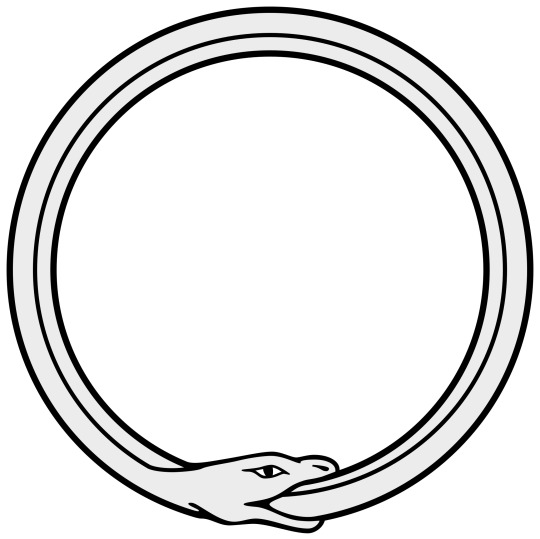
The Ankh:
In the middle of the pentagram was an Ankh. The ankh is one of the most recognizable symbols from ancient Egypt, often referred to as the "key of life" or "cross of life." This symbol resembles a cross with a loop at the top.
The enduring appeal of the ankh lies in its simple yet powerful design, encapsulating essential aspects of Egyptian thought, including the union of opposites, the importance of life and the afterlife, and the interaction between the divine and the mortal.
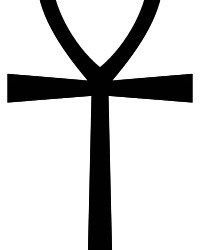
Alchemical Solar Symbol:
The alchemical solar symbol is a classic emblem in alchemical traditions, representing the sun and typically depicted as a circle with a dot in the center.
The symbol is one of the most recognizable across various cultural, spiritual, and alchemical contexts. In alchemy, it holds deep symbolic meanings related to the metal gold, philosophical and spiritual enlightenment, and the concept of perfection.

Sri Yantra:
The Sri Yantra, also known as Sri Chakra, is a complex and ancient symbol used in Hinduism, representing both the cosmic and the spiritual universe.
The design of the Sri Yantra is highly intricate and consists of nine interlocking triangles that surround and radiate out from a central point(bindu). These triangles are formed by the intersection of five downward-pointing triangles, representing Shakti; the female principle, and four upward-pointing triangles, representing Shiva; the male principle. This mix produces a total of 43 smaller triangles in a web symbolic of the entire cosmos or a womb symbolic of creation.
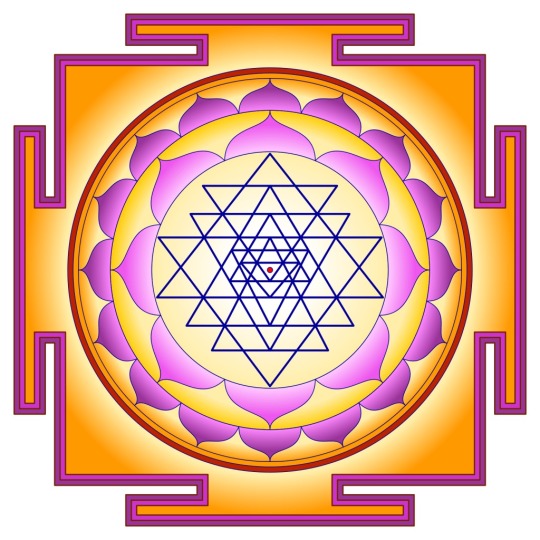
Cross of Saint Peter:
The inverted cross is associated with Saint Peter, one of the apostles of Jesus, who, according to early Christian tradition and writings, was martyred by being crucified upside-down. The inverted cross is often associated with satanism and anti-Christian sentiment in popular culture.
Frequently linked to satanism and anti-Christian sentiment, the inverted cross has been appropriated by those seeking to subvert or defy traditional religious norms. Despite attempts to repurpose it as a symbol of rebellion, its origins remain rooted in Christian tradition and symbolism, serving as a haunting reminder of the darker aspects of faith and martyrdom.

Sigil of Lucifer
The Sigil of Lucifer, also known as the Seal of Satan, is a symbol used predominantly in the occult to represent Lucifer. For Luciferians and satanists, the sigil holds more spiritually significant connotations. It is seen as a symbol of the quest for true knowledge, enlightenment, personal power, and the embrace of self-determination.
The Sigil of Lucifer is a complex symbol with historical roots in grimoires and magical texts, enriched by its use in various modern spiritual contexts. It stands as a representation of knowledge, enlightenment, and the metaphysical journey.
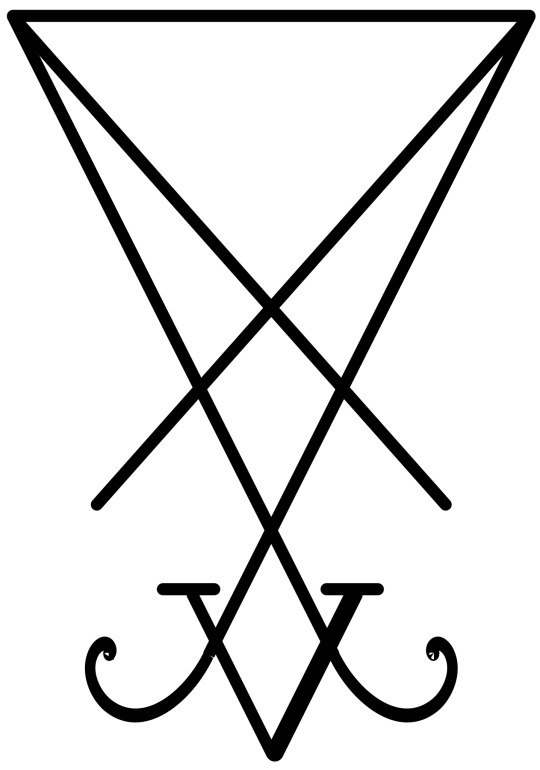
I’itoi
The I'itoi symbol, often associated with the Tohono O'odham deity I'itoi, is known as the "Man in the Maze." This emblem is a significant cultural symbol for the Tohono O'odham people and other indigenous groups in the American Southwest. The symbol depicts a labyrinth with a man positioned at the entrance, poised to navigate through its complex paths.
The I'itoi symbol, with its deep cultural roots and profound symbolism, continues to be a powerful representation of the human experience, resonating with diverse groups and individuals seeking meaning in the labyrinth of life.
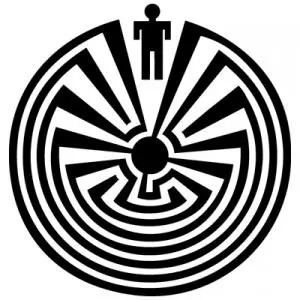
Conclusion:
The eclectic amalgamation of symbols used in the described ritual—spanning from Christian, Egyptian, Hindu, alchemical, to indigenous origins—suggests a complex layering of meanings and intentions. The inversion of the pentagram, traditionally a symbol of spiritual dominance over material elements, points instead towards the alchemical sun, hinting at an esoteric focus on material perfection and enlightenment.
This syncretism could be intended to harness the collective powers and associations of these symbols, thereby amplifying the ritual's effectiveness or tailoring it to specific metaphysical outcomes. The presence of both unifying symbols like the Ouroboros and the inverted pentagram invites a reflection on the nature of the forces being invoked. Potentially balancing creation with destruction, order with chaos.
Speculating on the creators and their motivations, one might see this as an attempt by a modern-day esoteric group to bridge various mystical traditions, possibly seeking a universal language of mystical and spiritual symbolism. Alternatively, it could represent a more personal or localized spiritual practice, reflecting the individual creator’s journey through different spiritual landscapes.
Such a ritual underscores the enduring human fascination with the mystical and the arcane, prompting further inquiry into how and why disparate cultural elements are woven together in contemporary spiritual practices. It also invites us to reflect on the broader implications of such syncretism in the context of global cultural interactions and the evolving nature of belief systems in the modern world.
By delving into these symbols and their juxtapositions, we not only uncover layers of meaning in the ritual itself but also engage with the broader dialogue about the role of ancient symbols in modern spirituality. Further exploration into other symbols and rituals might reveal additional insights into the ways spiritual practices continue to evolve and adapt in a continuously interconnecting world.
#symbols#occult#occultism#witchcraft#witches#magick#pentagram#ominous#strange#esoteric#ritual#clandestine#oddities#weirdcore#symbolic
4 notes
·
View notes